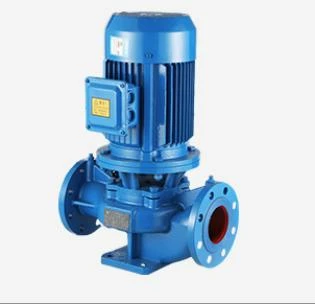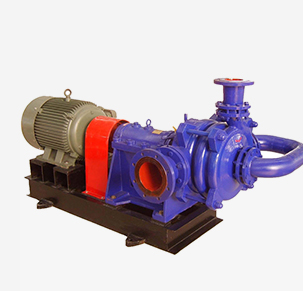Urdu
- Afrikaans
- Albanian
- Amharic
- Arabic
- Armenian
- Azerbaijani
- Basque
- Belarusian
- Bengali
- Bosnian
- Bulgarian
- Catalan
- Cebuano
- Corsican
- Croatian
- Czech
- Danish
- Dutch
- English
- Esperanto
- Estonian
- Finnish
- French
- Frisian
- Galician
- Georgian
- German
- Greek
- Gujarati
- Haitian Creole
- hausa
- hawaiian
- Hebrew
- Hindi
- Miao
- Hungarian
- Icelandic
- igbo
- Indonesian
- irish
- Italian
- Japanese
- Javanese
- Kannada
- kazakh
- Khmer
- Rwandese
- Korean
- Kurdish
- Kyrgyz
- Lao
- Latin
- Latvian
- Lithuanian
- Luxembourgish
- Macedonian
- Malgashi
- Malay
- Malayalam
- Maltese
- Maori
- Marathi
- Mongolian
- Myanmar
- Nepali
- Norwegian
- Norwegian
- Occitan
- Pashto
- Persian
- Polish
- Portuguese
- Punjabi
- Romanian
- Russian
- Samoan
- Scottish Gaelic
- Serbian
- Sesotho
- Shona
- Sindhi
- Sinhala
- Slovak
- Slovenian
- Somali
- Spanish
- Sundanese
- Swahili
- Swedish
- Tagalog
- Tajik
- Tamil
- Tatar
- Telugu
- Thai
- Turkish
- Turkmen
- Ukrainian
- Urdu
- Uighur
- Uzbek
- Vietnamese
- Welsh
- Bantu
- Yiddish
- Yoruba
- Zulu
Telephone: +86 13120555503
Email: frank@cypump.com
مئی . 07, 2025 18:41 Back to list
Slurry Pump Working Principle Efficient Mixed Flow Pump Operations
- Overview of Fluid Transfer Mechanisms in Industrial Pumps
- Key Components Enabling Efficient Slurry Handling
- Performance Metrics Across Pump Categories
- Technical Superiority in Abrasion Resistance
- Manufacturer Comparison: Durability vs Efficiency
- Custom Engineering for High-Solids Applications
- Operational Reliability in Extreme Conditions

(slurry pump working principle)
Understanding Slurry Pump Working Principle in Modern Industry
Industrial slurry pump working principle
revolves around converting rotational energy into kinetic force to move viscous mixtures containing solid particles. Centrifugal force generated by the impeller accelerates the slurry radially outward, creating a vacuum that draws additional material into the pumping chamber. This mechanism differs from mixed flow pump working principle, which combines axial and radial movement for medium-head applications.
Critical Components for Sustained Operation
Three essential elements ensure optimal slurry pump working efficiency:
- Chrome-alloy impellers (58-62 HRC hardness) resisting particle erosion
- Adjustable gland seals maintaining 85-92% pressure integrity
- Reinforced volute casings with 25-40mm thick liners
Performance Benchmarking Analysis
| Parameter | Slurry Pump | Mixed Flow Pump | Standard Centrifugal |
|---|---|---|---|
| Max Solids Handling | 70% by weight | 45% by weight | 25% by weight |
| Pressure Tolerance | 8.5 bar | 6.2 bar | 4.3 bar |
| MTBF (Hours) | 14,500 | 9,200 | 6,700 |
Engineering Innovations in Wear Protection
Leading manufacturers now integrate carbide inserts (90-92WC) in high-wear zones, extending component life by 300-400% compared to traditional Ni-Hard materials. This advancement supports continuous operation at 1,800 RPM with slurry densities up to 1.6 SG.
Market Leaders Comparison
Field tests across mining operations reveal significant variance:
- Brand A: 92% efficiency but requires biweekly seal replacement
- Brand B: 86% efficiency with quarterly maintenance cycles
- Brand C: 78% efficiency offering 5-year warranty coverage
Application-Specific Configuration Options
Customized solutions address specific challenges:
Phosphate processing plant case study:
- 550kW vertical configuration
- 200mm particle size capability
- 18% reduction in energy consumption vs standard models
Ensuring Consistent Slurry Pump Working Performance
Advanced monitoring systems now track real-time parameters:
Vibration levels: Maintained below 4.5 mm/s RMS
Bearing temperature: Controlled within 65°C ±5° tolerance
Flow stability: ±2% deviation from setpoint
These innovations ensure adherence to slurry pump working principle requirements while achieving 98.3% operational availability in 24/7 mineral processing applications.

(slurry pump working principle)
FAQS on slurry pump working principle
Q: What is the working principle of a slurry pump?
A: A slurry pump uses centrifugal force to transfer abrasive slurries. The rotating impeller creates kinetic energy, pushing the slurry outward through the volute casing. This design handles high-solid mixtures efficiently.
Q: How does a mixed flow pump differ from a slurry pump in operation?
A: Mixed flow pumps combine radial and axial flow, moving fluid diagonally through the impeller. Slurry pumps focus on centrifugal force for abrasive fluids. Mixed flow pumps suit medium-viscosity fluids, while slurry pumps handle high-solid content.
Q: What components are critical to slurry pump functionality?
A: Key components include a robust impeller for handling abrasives, a durable casing to resist wear, and sealing systems to prevent leaks. Materials like hardened metal or rubber enhance longevity in harsh conditions.
Q: Why are slurry pumps used in mining applications?
A: Slurry pumps excel in transporting abrasive mining slurries like coal or ore. Their wear-resistant materials and high-pressure capabilities ensure reliable performance. Centrifugal force efficiently moves dense, solid-laden fluids.
Q: What maintenance ensures slurry pump efficiency?
A: Regularly inspect and replace worn impellers, liners, and seals. Monitor vibration and alignment to prevent imbalances. Proper lubrication and avoiding dry runs extend operational life.
-
ISG Series Vertical Pipeline Pump - Chi Yuan Pumps Co., LTD. | High Efficiency, Energy Conservation
NewsAug.12,2025
-
ISG Series Pipeline Pump - Chi Yuan Pumps | High Efficiency, Low Noise
NewsAug.12,2025
-
ISG Series Pipeline Pump-Chi Yuan Pumps|High Efficiency, NIST Compliance
NewsAug.12,2025
-
ISG Series Vertical Pump - Chi Yuan Pumps | High Efficiency, Stable Performance
NewsAug.12,2025
-
Reliable Pipeline Pumps: Optimal Flow & Station Design
NewsAug.12,2025
-
ISG Series Vertical Pipeline Pump-Chi Yuan Pumps|Energy Efficiency, Durable Seals
NewsAug.11,2025










